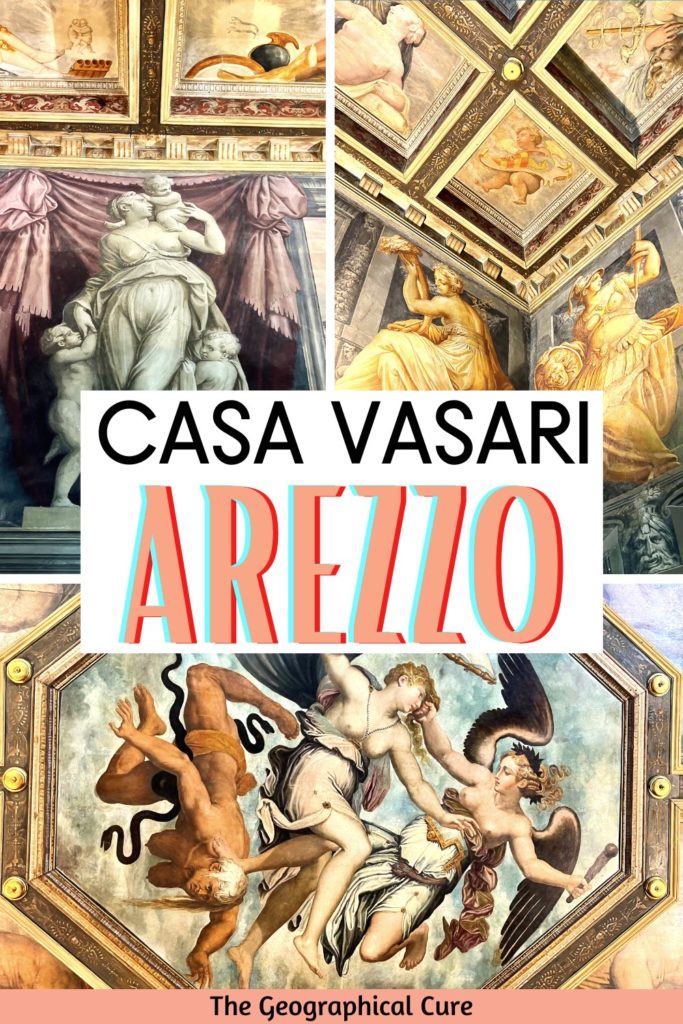Casa Vasari is an utterly charming small house museum in Arezzo. If you love Renaissance art, you must put this lovely hidden gem on your Tuscany itinerary.
Casa Vasari was the exquisite home of the famous Giorgio Vasari. Vasari was a painter, architect, connoisseur, and author during the late Renaissance.
He’s best known as the world’s first modern art historian, based on his juicy treatise The Lives of the Most Excellent Painters, Sculptors, and Architects.
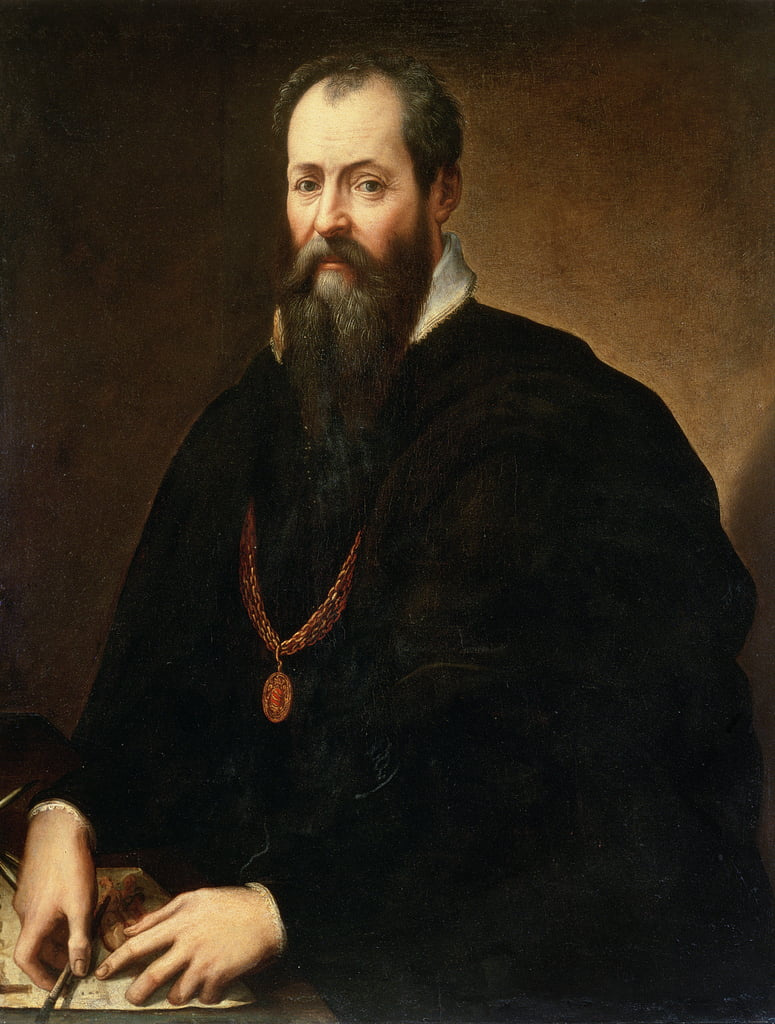
His titular museum was his home and studio in Arezzo, his birthplace. Vasari bought the house in 1541 for seven hundred gold florins.
Vasari painted frescos in six rooms between 1542-68. The sumptuous frescos depict biblical scenes, mythological scenes, and sacred and profane allegories. His home is the best preserved artist’s house from the era and a triumph of the late renaissance style of Mannerism.
Having read the Lives and seen all of Vasari’s works in Florence, I was excited to see his frescoed house in Arezzo. And it delivered.
The museum is incredibly charming, a rare chance to get a glimpse into the life of a famous Renaissance artist and be enveloped in his art.
In this guide, I give you a short history of Vasari’s life and tell you everything to see inside his house.
Mini Biography of Vasari
But first, who is Giorgio Vasari?
We know about Vasari’s life because he wrote his own autobiography in The Lives. Vasari was born in 1511 in Arezzo, a quaint town in Tuscany.
Giorgio was inspired to become an artist by his great uncle Luca Signorelli. He was a talented Florentine artist known for his great fresco cycle in Orvieto Cathedral.
Vasari was sent to Florence in 1525. He entered the workshop of the talented Andrea del Sarto. But Vasari was most strongly influenced by Michelangelo.
Vasari spent time working in Rome and in Florence for the Medici family, who were his foremost patron.
Vasari frescoed and created architectural designs for many of Florence’s greatest landmarks like the Palazzo Vecchio and Brunelleschi’s Dome.
Vasari finished writing The Lives in 1547. Who knows where he found the time to write he was so busy with commissions …
Vasari was highly thought of as an artist and architect in his lifetime. Because of his Medici patronage and the success of The Lives, he amassed a considerable fortune.
With it, Vasari designed, built, and frescoed his house in Arezzo. The frescos express, in personal terms, Vasari’s fascination with antiquity, artistic virtuosity, and the old masters. You can see the mindset of Renaissance thinkers.
Vasari was so well regarded that he was even elected “mayor” of Arezzo. When Vasari died, the house passed to his heirs.
In 1911, the fourth centenary of Vasari’s birth, the house was bought by the state and transformed into a museum.
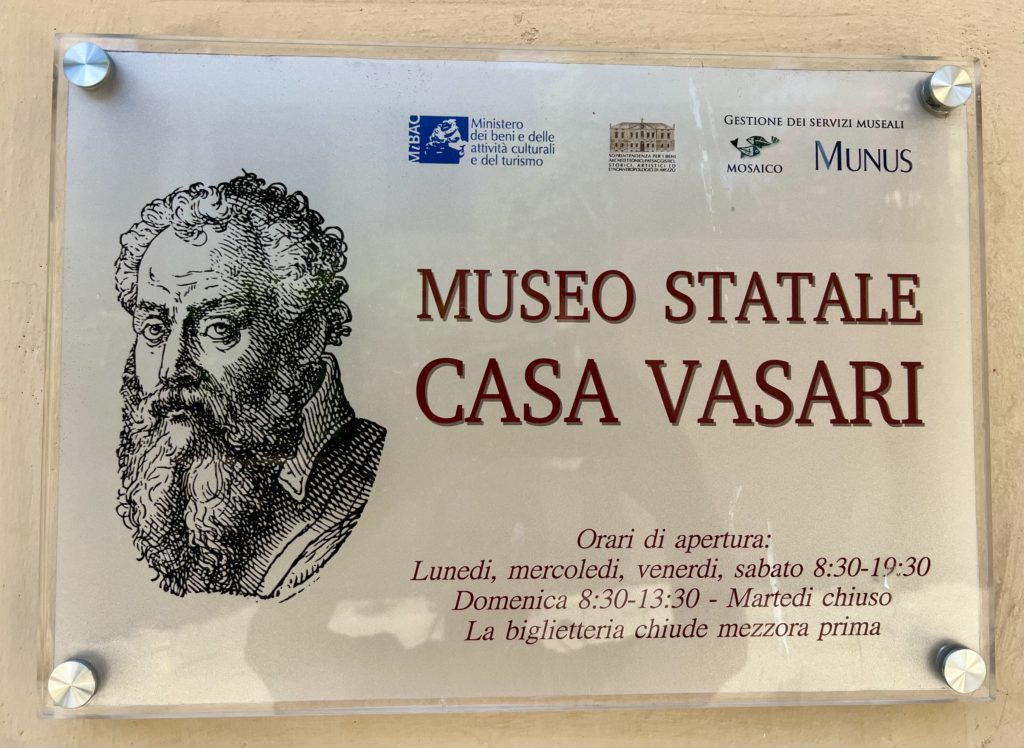
Guide To Casa Vasari: What To See
Here are the things to see in Casa Vasari. I’ve put then in the order you’ll encounter them as you follow the museum route.
1. Overview
The museum consist of six rooms that you can see, plus a garden. There’s also a picture gallery composed of some paintings by Vasari and his colleagues from the 15th and 16th centuries.
When you enter, there’s a 10 minute film you can watch about Vasari’s life and Casa Vasari.
There’s also a timeline of Vasari’s life and the politics of the day. Vasari lived in a turbulent time when Florence vacillated between being a republic and an oligarchy ruled by the Medici. He also lived through the Sack of Rome by Emperor Charles V.
READ: History of the Medici
The ceilings aren’t very high, so you can see the frescos well. There are no period furnishings in the house. But that’s probably better. The frescos take center stage.
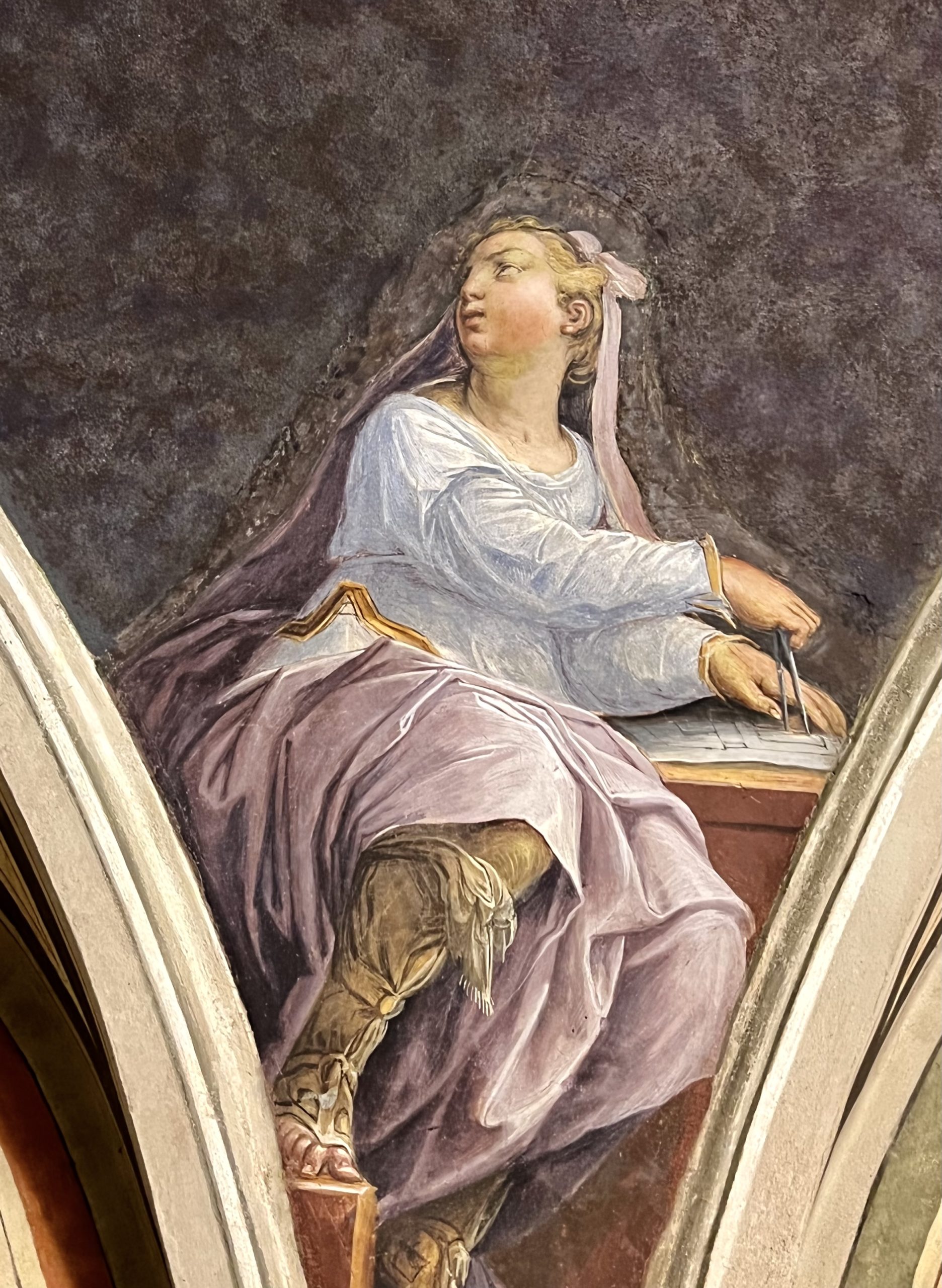
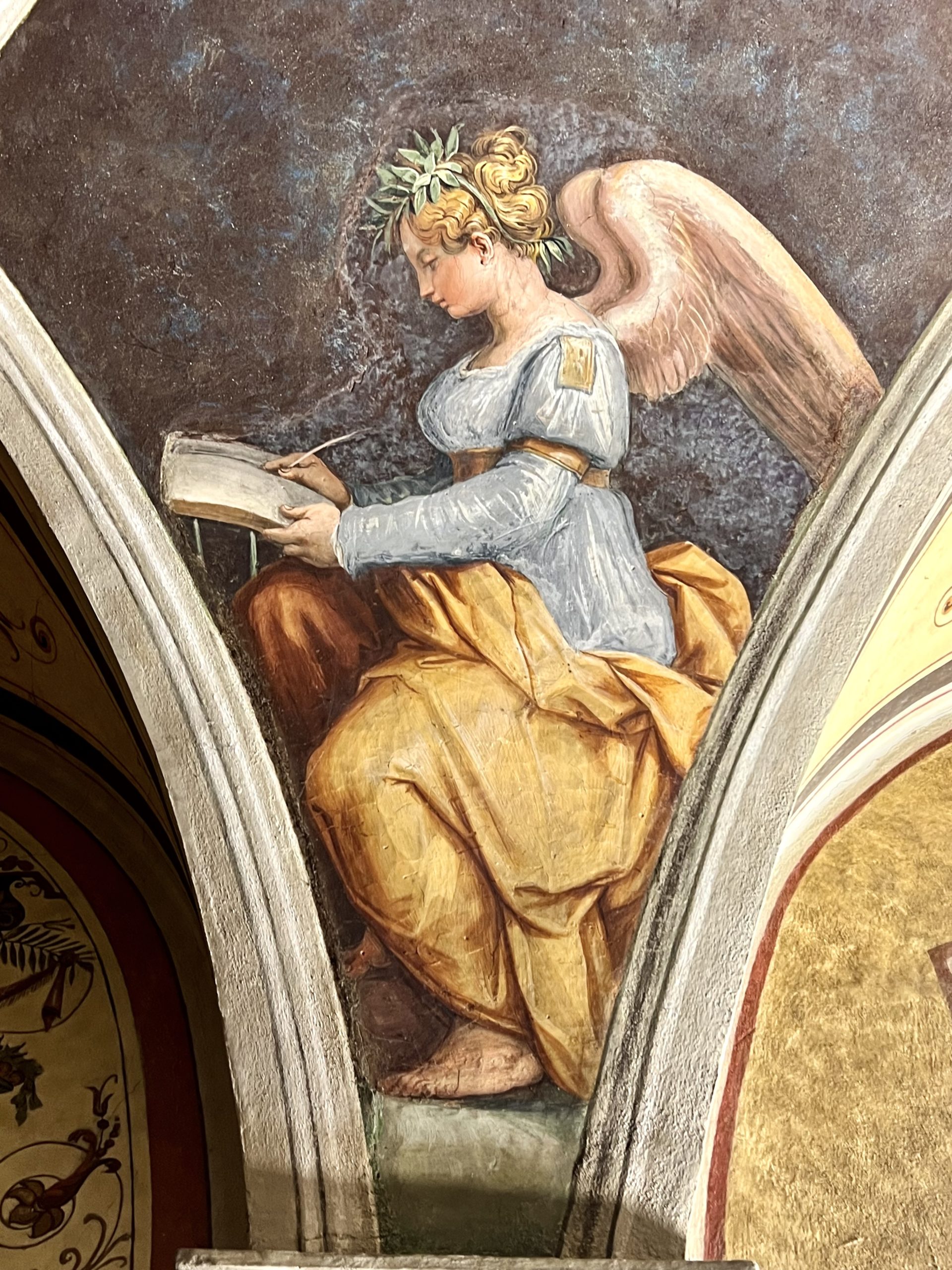
2. Room of Arts and Fame
The Room of Arts and Fame was the first room to painted in Vasari’s house. In the ceiling center, there is an allegory of fame. A woman sits on a globe playing a trumpet.
In the pendentives are feminine figures representing the allegories of poetry, painting, sculpture, architecture, etc.
In the lunettes under the vault, Vasari painted oval portraits of famous painters, including one of Michelangelo. He even included his own self portrait.
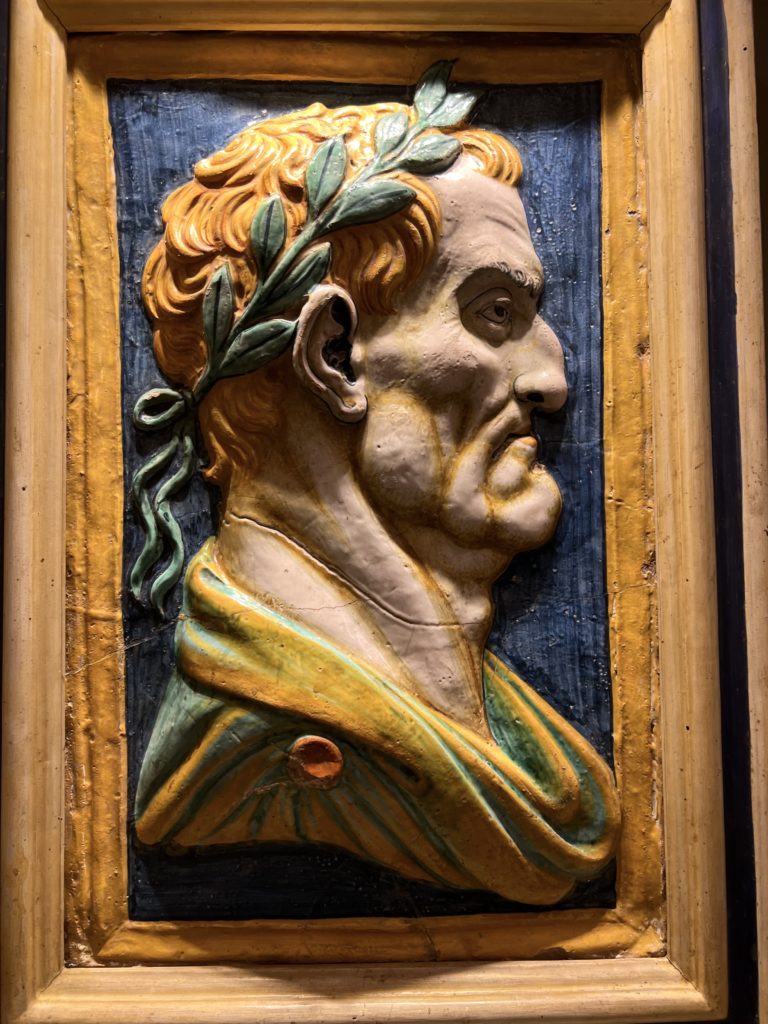
3. Stanzino Vasari
This small room is near the Room of Arts and Fame. It contains some autograph works by Vasari, including a portrait of his greatest patron, Cosimo I de Medici
A stand out piece is the polychrome majolica of Emperor Galba’s head. It’s a work by Andrea Contucci, created between 1510-15.
It was likely created based on an effigy from a Roman coin. Vasari bought the piece from the Vespucci family of Florence.
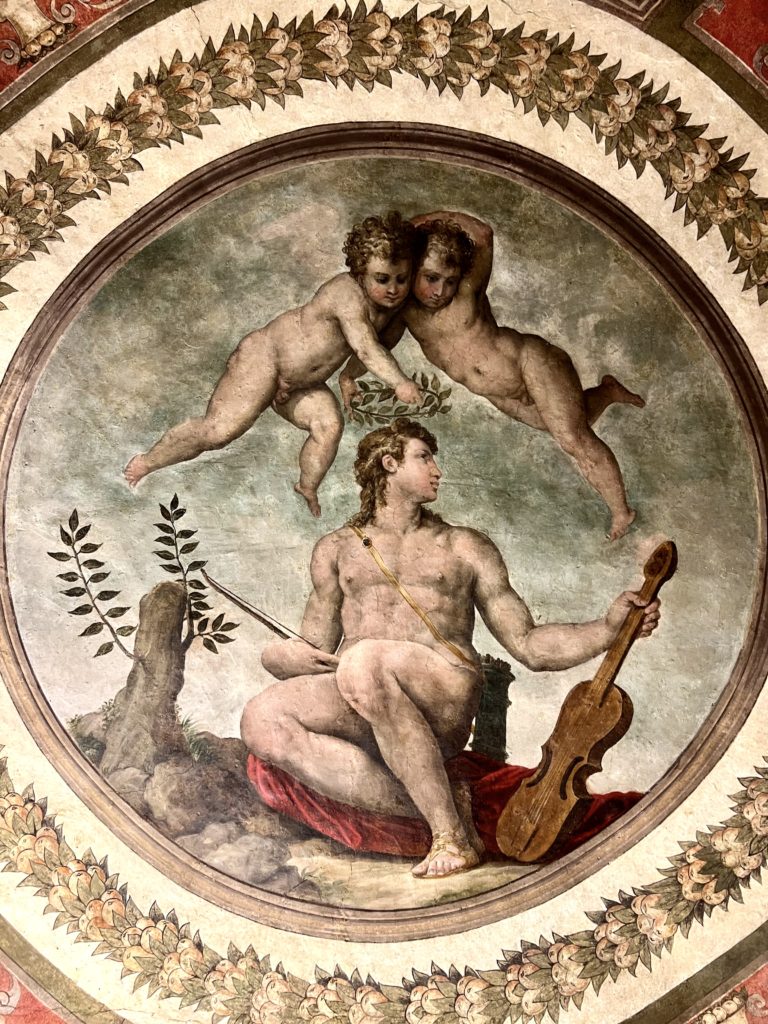
4. Room of Apollo and the Muses
In this room, in the center of the ceiling we see Apollo. There’s a quiver across his back and he holds a musical instrument. These are the symbols of singer and poet.
Two laurel branches sprout from his bow. Two angels above crown Apollo with a laurel wreath.
In the vault pendatives, there are nine figures of the muses, who protect the arts. On the window wall is a portrait of Vasari’s wife, Niccolosa Bacci, in a yellow dress.
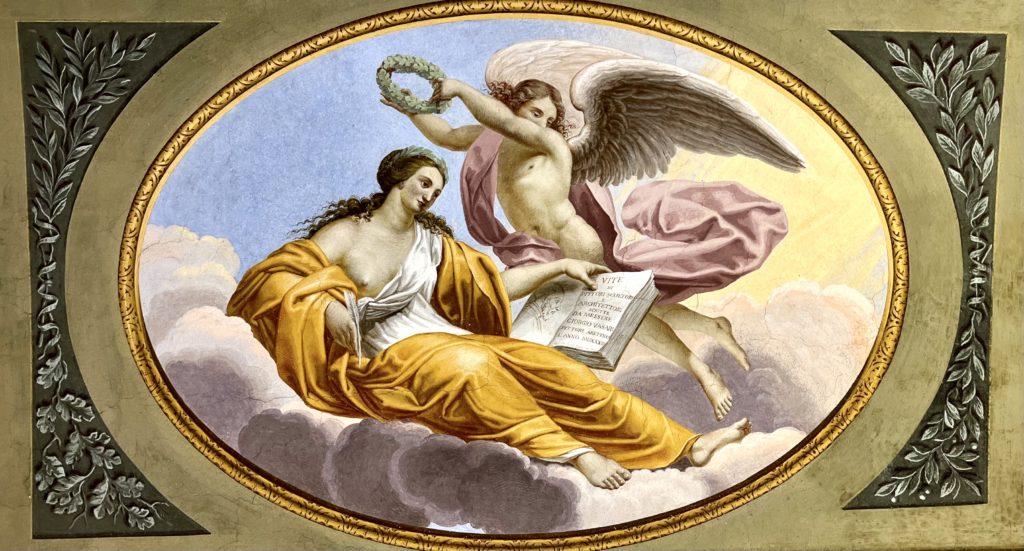
5. Kitchen
The next room you enter was likely used as a kitchen, as evidenced by the fireplace.
In the vault, there’s a woman in an oval. She holds a pen and open book.
You can read the title and see that it’s Vasari’s The Lives. A winged figure crowns the lady with a laurel garland.
There are also two square monochrome paintings. They depict classical scenes referencing the building of the Parthenon during the age of Pericles.
At the corners, Vasari painted instruments and emblems in a composition called Triumphs. They refer to the same arts introduced in the Room of Fame.
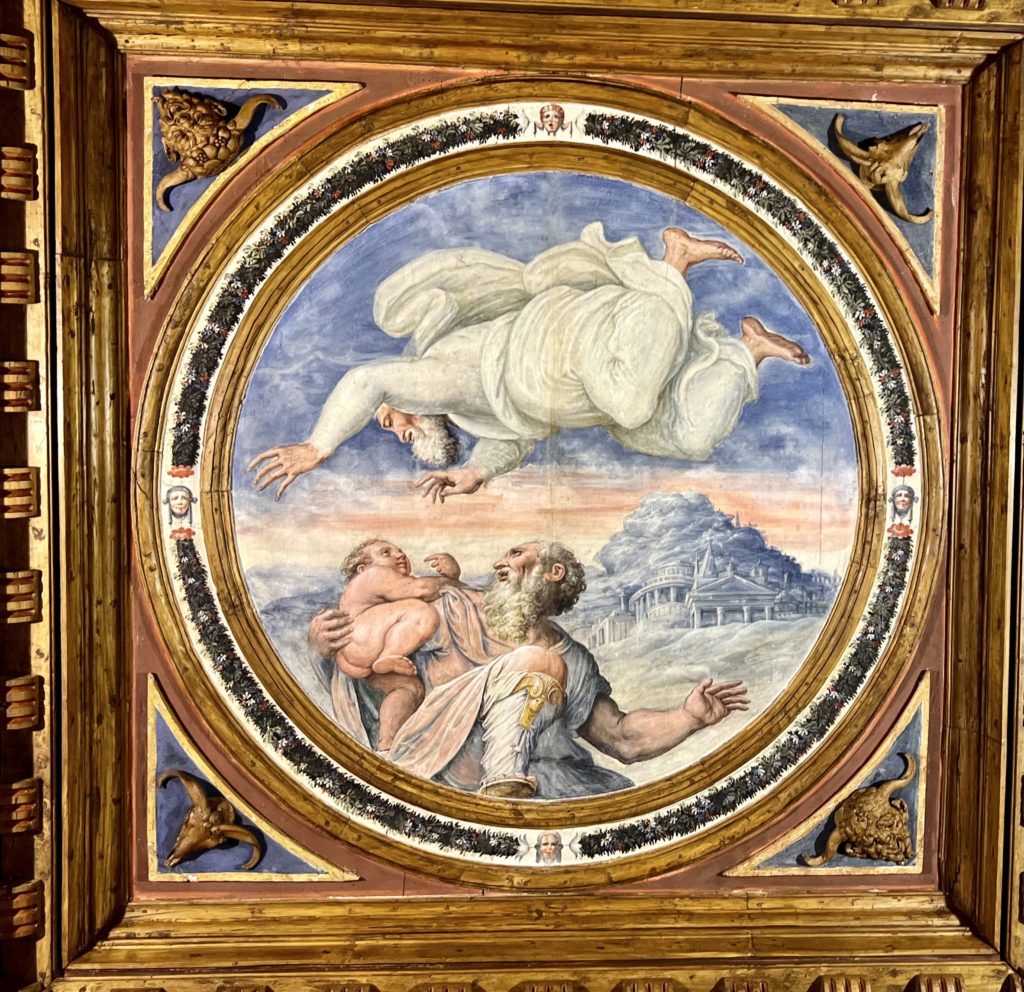
6. Abrahm’s Room
This room was where Vasari and Niccolosa were married. It has an intricate wooden ceiling carved by the carpenter Marsilio.
This room has the museum’s only religious-themed frescos. In the center, Vasari painted God blessing the seed of Abrahm, suggesting a never-ending breed.
There are four feminine figures from the Old Testament around the scene. They are intended to represent family and fertility. Unfortunately, Vasari and Niccolosa had no children.
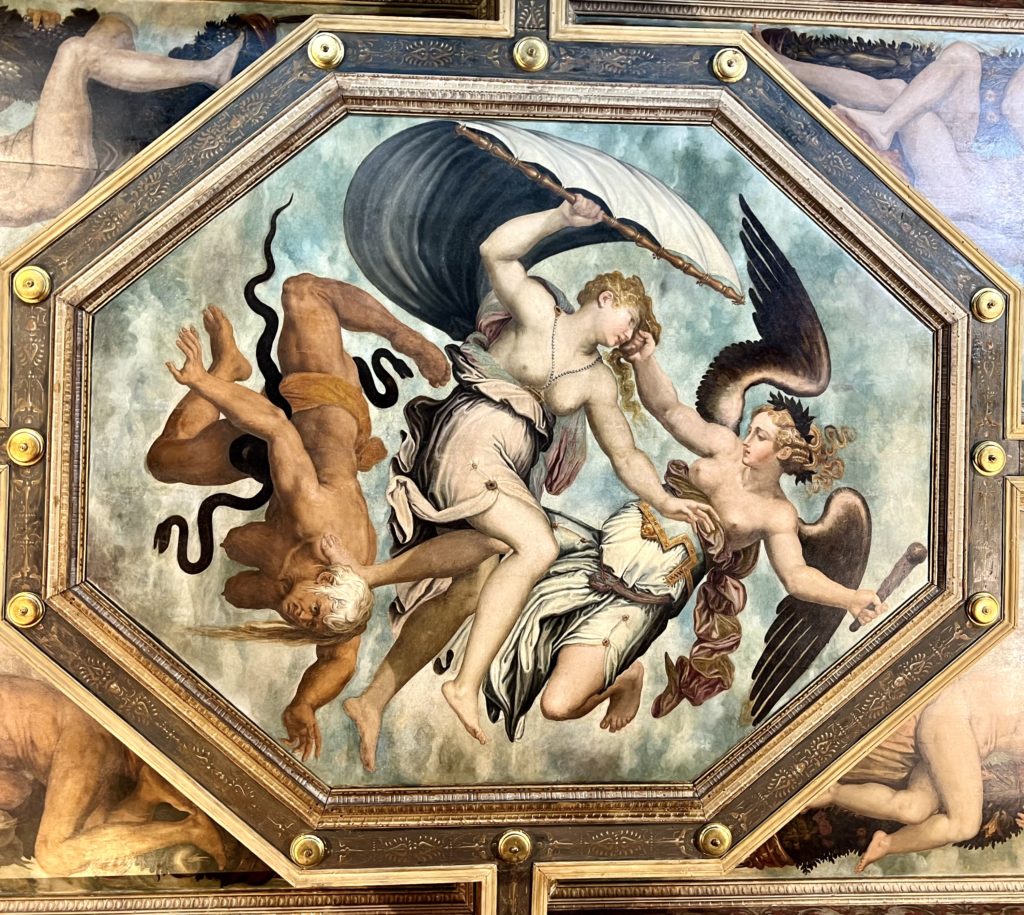
7. Room of Virtue’s Triumph
The Room of Virtue is the most important room in the museum. It’s where Vasari frescoed as he wrote The Lives. The stunning room was painted in 1548.
It depicts episodes from the lives of the most famous painters of antiquity. This “Room of the Celebrities” show Vasari’s portraits of his contemporaries, including portraits of Michelangelo and Andrea del Sarto. There’s also a self portrait of Vasari, including himself in his great masters.
It’s a bright room covered with decorative motifs, caryatids, plaster casts, and grotesque masks.
The ceiling sports 17 paintings. The octagon-shaped painting in the center represents the allegories of Virtue, Fortune, and Envy.
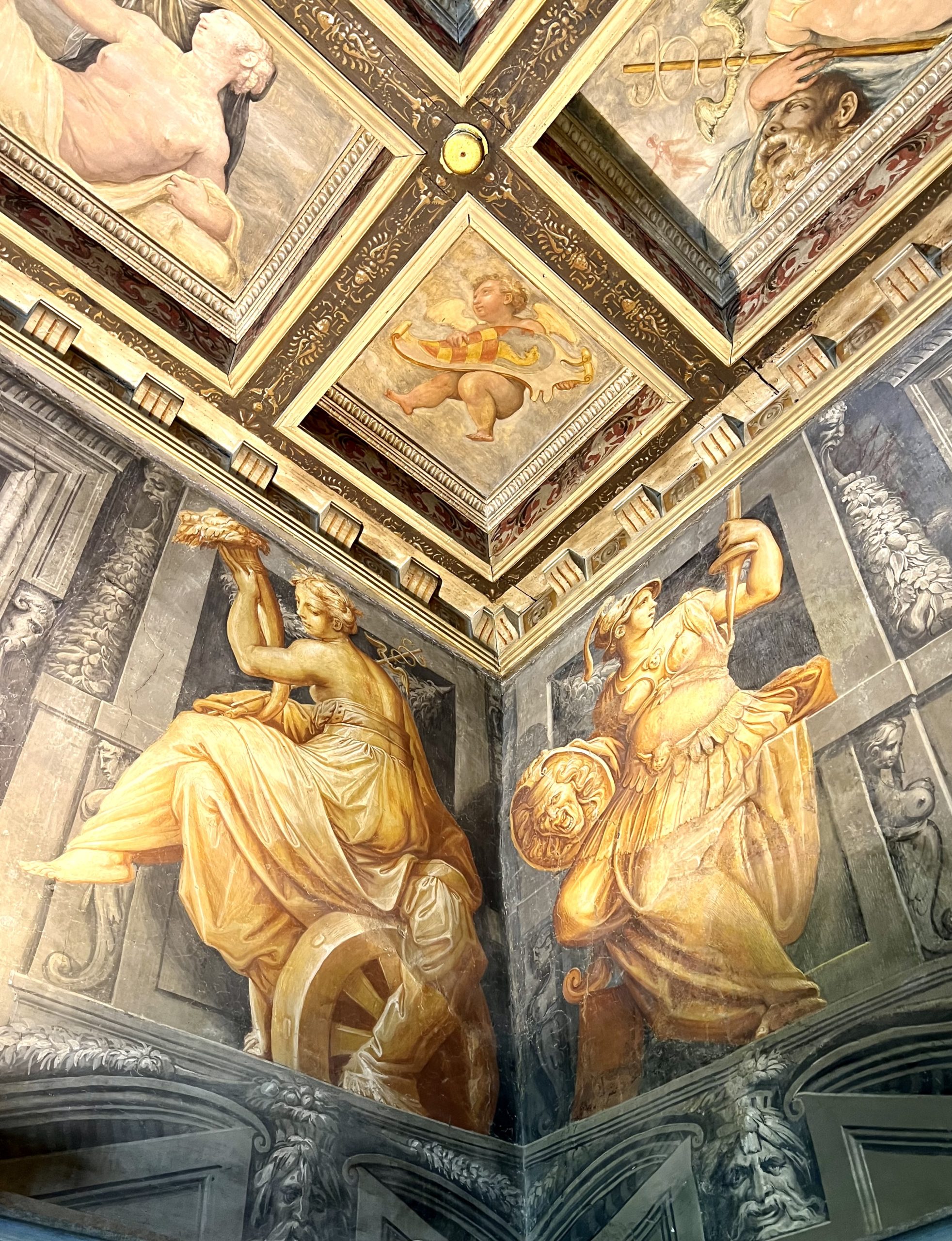
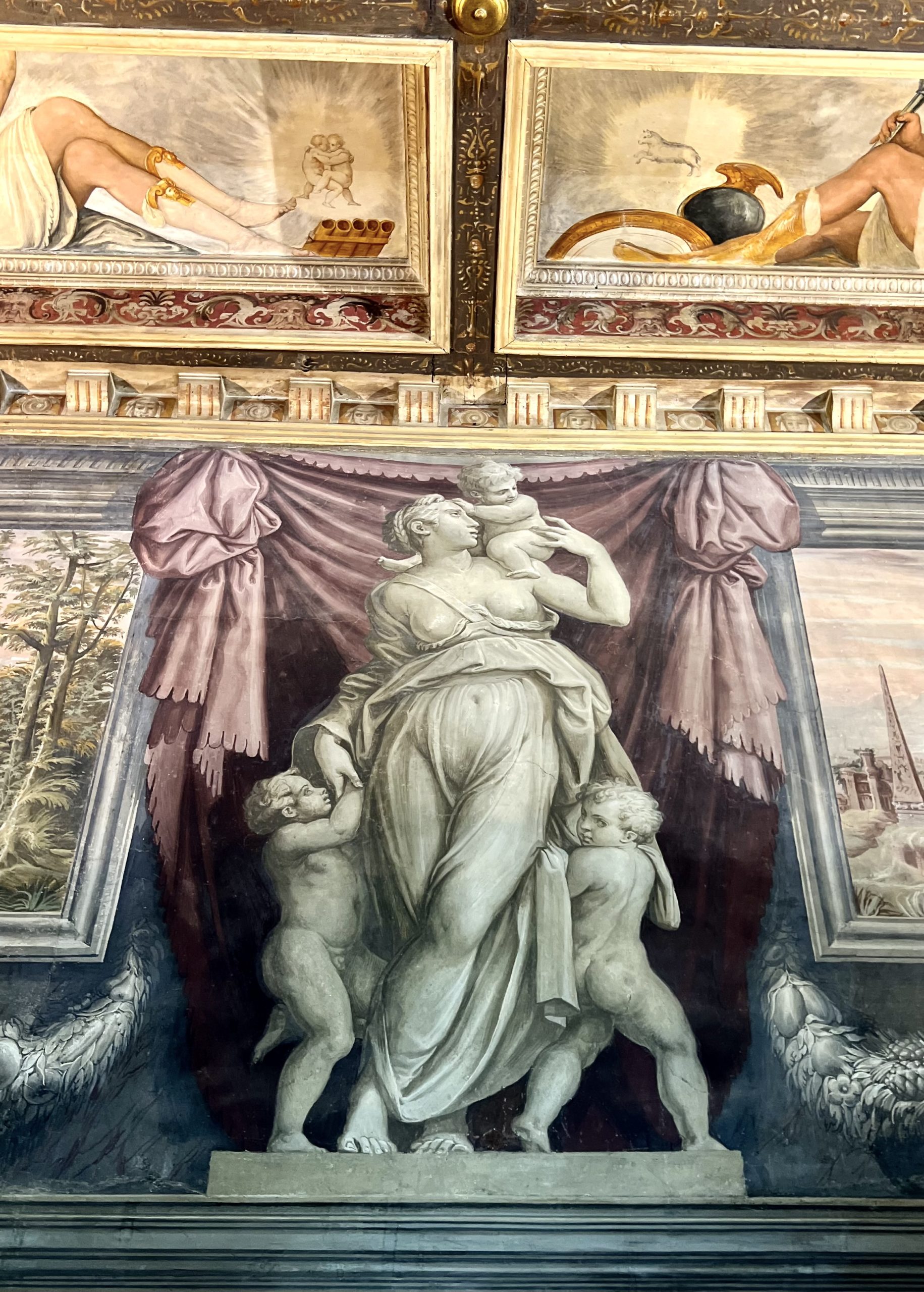
The interpretation of the image — who is winning? — depends on the perspective of the viewer. Vasari intentionally designed it to be an optical illusion where the winning allegory depends on your viewpoint.
The image is surrounded by scenes depicting the four seasons and their Zodiac symbols.
The four seasons correspond to the four ages of man, with planets hovering overhead. Vasari suggests that man will triumph over adversity.
There’s a bench in this room where you can sit down and admire the frescos at your leisure.
8. Private Chapel
Vasari even had a tiny chapel. There’s an altar and a painting of St. Francis of Assisi. The floor is beautiful, covered in handmade majolica tiles.
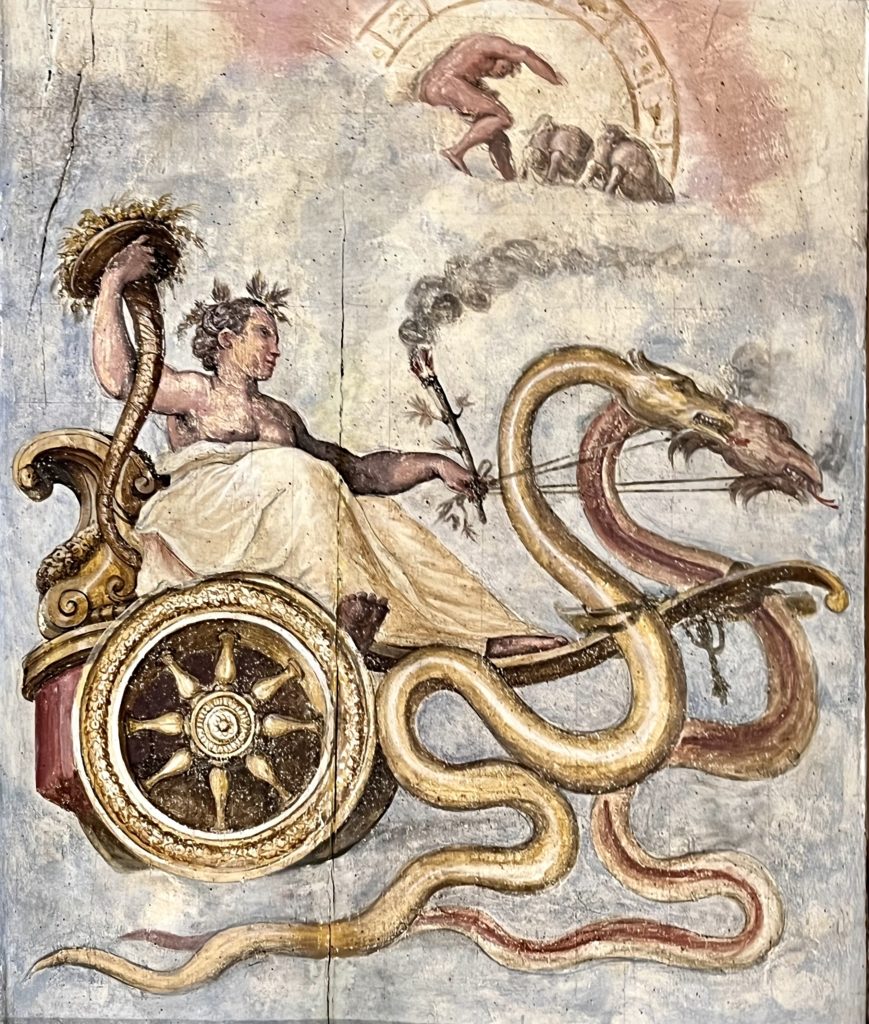
9. Cerece’s Corridor
This is a tiny corridor between rooms which leads to the garden. The vaulted ceiling shows a chariot being pulled by two dragons.
Cerere Demetra drives the chariot. In the background, Apollo leads the Chariot of the Sun, set against a Zodiac symbol.
10. Transcripts and Correspondence
Vasari’s House also houses the original transcript of The Lives. You’ll also find some his correspondence with Michelangelo and Cosimo I de Medici.
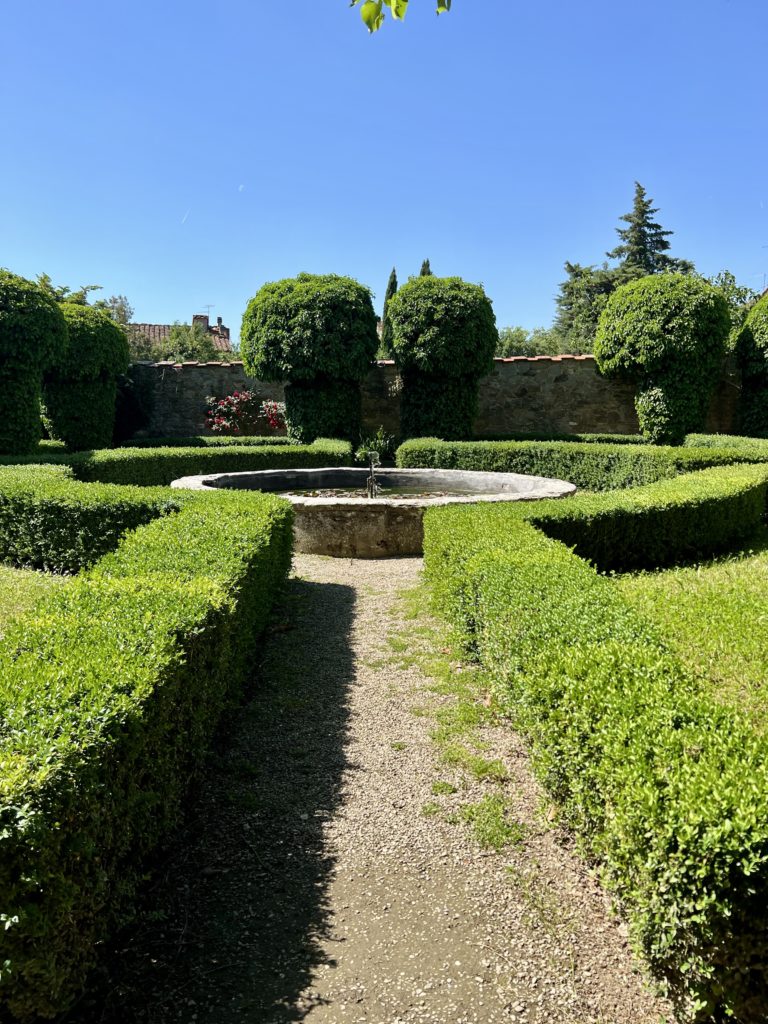
11. Garden
Vasari viewed his house as an escape pad from the hustle and bustle of Florence. He said it had “the purest air in the city.”
The garden is small, but lovely with a fountain and some roses.
Practical Guide & Tips For Visiting Casa Vasari
Address: Via X Settembre 55. You may need to ring the bell when you arrive.
Hours:
You need to pay close attention to the opening times because they’e all different, depending on the day. The museum is open daily except closed Tuesdays. On Monday, the museum is open from 2:15 pm to 7:30 pm.
On the other weekdays, the museum is open from 9:00 am to 7:30 pm. On Saturday, you can visit from 2:15 pm to 7:30 pm. On Sunday, it’s open from 9:00 am to 12:30 pm.
Visiting Rules:
Right now, only 20 people can visit each hour. You can only visit with a pre-booked reservation. You can stay for one hour in the museum.
I just stopped into the museum once I was in Arezzo and got an appointment for a couple hours later.
Tickets: The ticket price is a perfectly reasonable 4 euros.
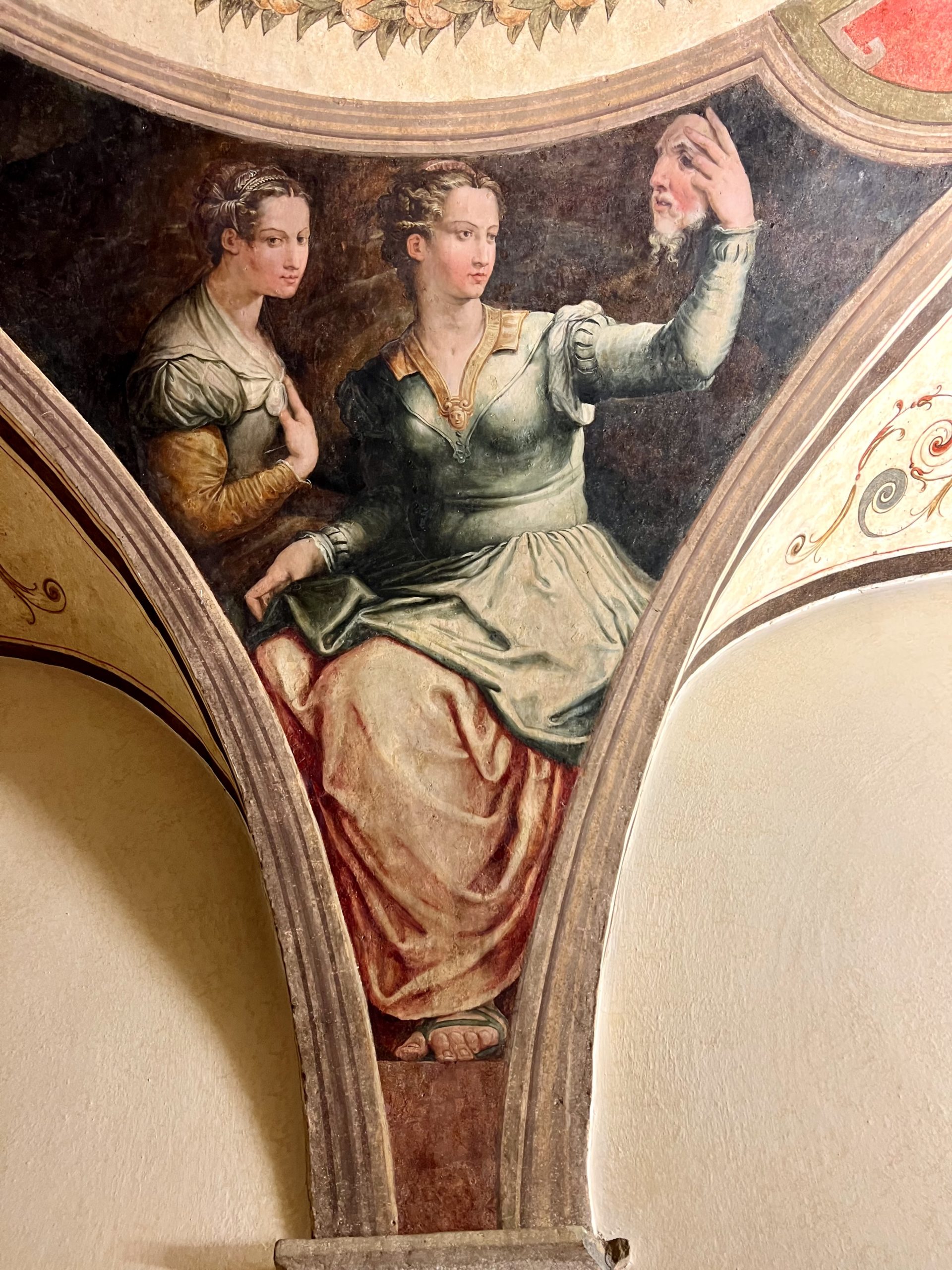
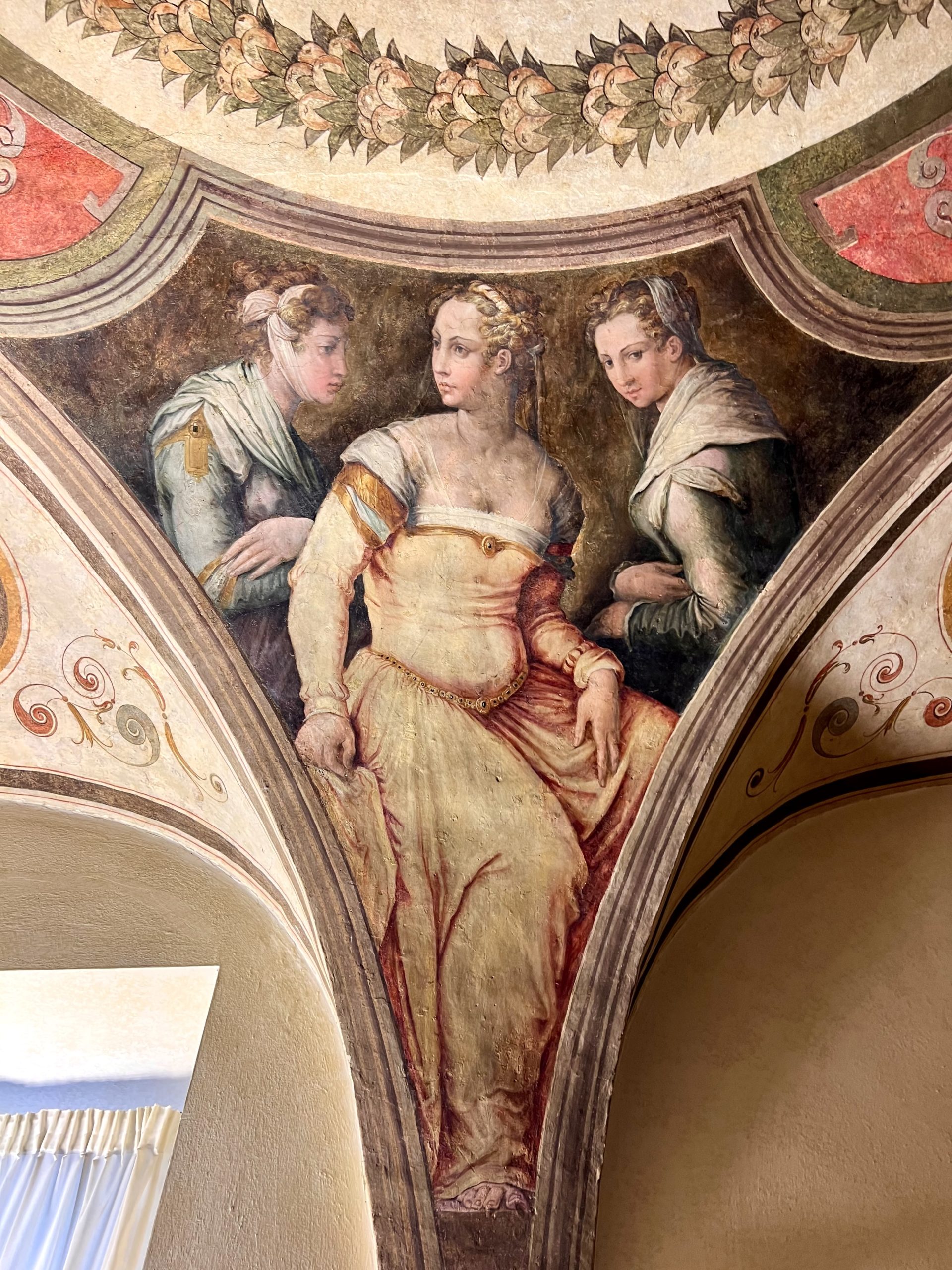
You can also buy a combination ticket that includes both Casa Vasari and the Basilica of San Francesco. The basilica has a renowned fresco cycle by Piero della Francesca, The Legend of the True Cross.
How To Get To Arezzo:
Arezzo is an easy day trip from Rome, just an hour by high speed train from Rome’s Termini station.
Arezzo is also an easy day trip from Florence. You can drive or take the train.
If you’re driving, park on the outskirts of town or at the Arezzo train station. You don’t want to drive in the historic center.
Arezzo’s train station is in the new part of town. But it’s only a 10 minute walk to the historic center.
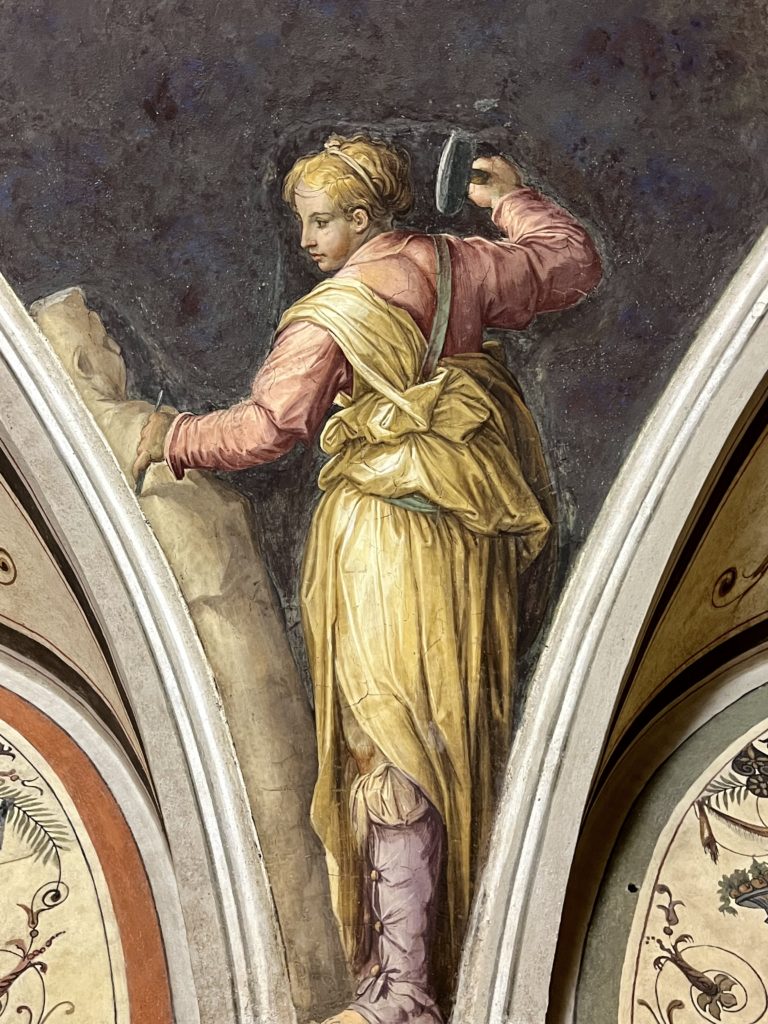
Guided Tours:
You can book a guided tour of Arezzo. You can also book a full day guided tour from Rome of both Arezzo and Cortona.
Where To Stay In Arezzo
I stayed at the Graziela Patio Hotel right in the historic center and it was quite lovely. Another great place to stay just outside the city is Badia di Pomaio. It’s a luxury hotel housed in a restored 17th century abbey.
I hope you’ve enjoyed my guide to Casa Vasari. You may enjoy these other Tuscany travel guides and resources:
- 10 Days in Tuscany itinerary
- 1 Day In Florence Itinerary
- 3 Days in Florence Itinerary
- Best museums in Florence
- Hidden gems in Florence
- 1 Day In Siena itinerary
- Best Things To Do in San Gimignano
- Best Things To Do In Montepulciano
- Best Things To Do In Pienza
If you’d need a guide for visiting Casa Vasari, pin it for later.
